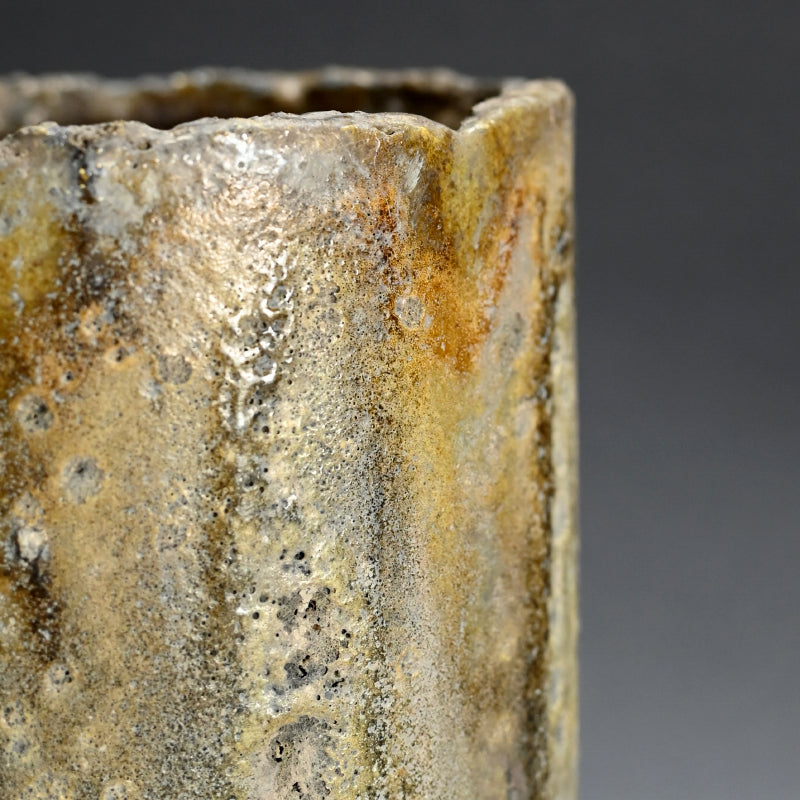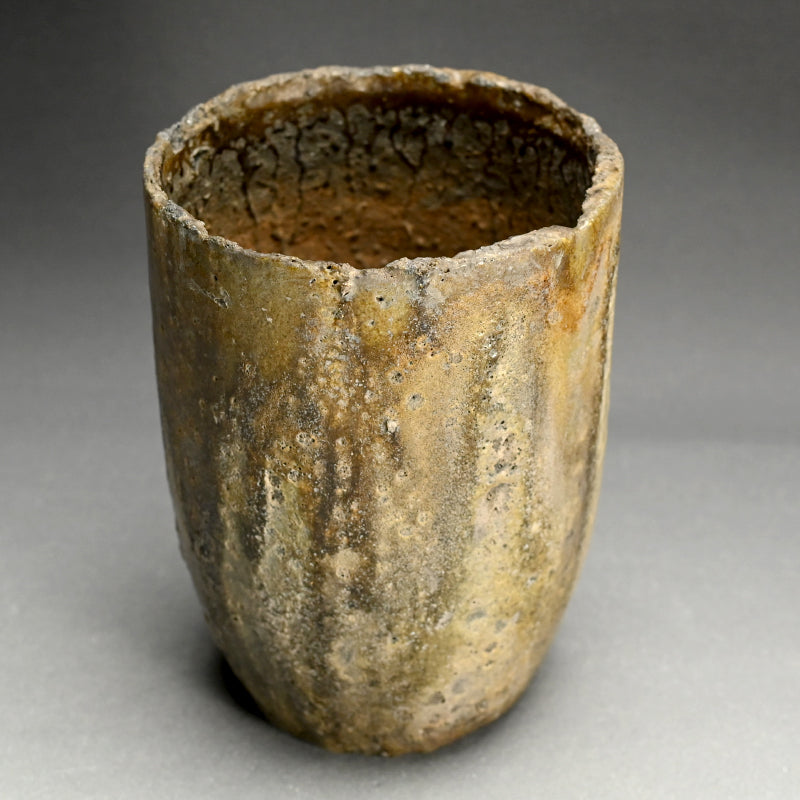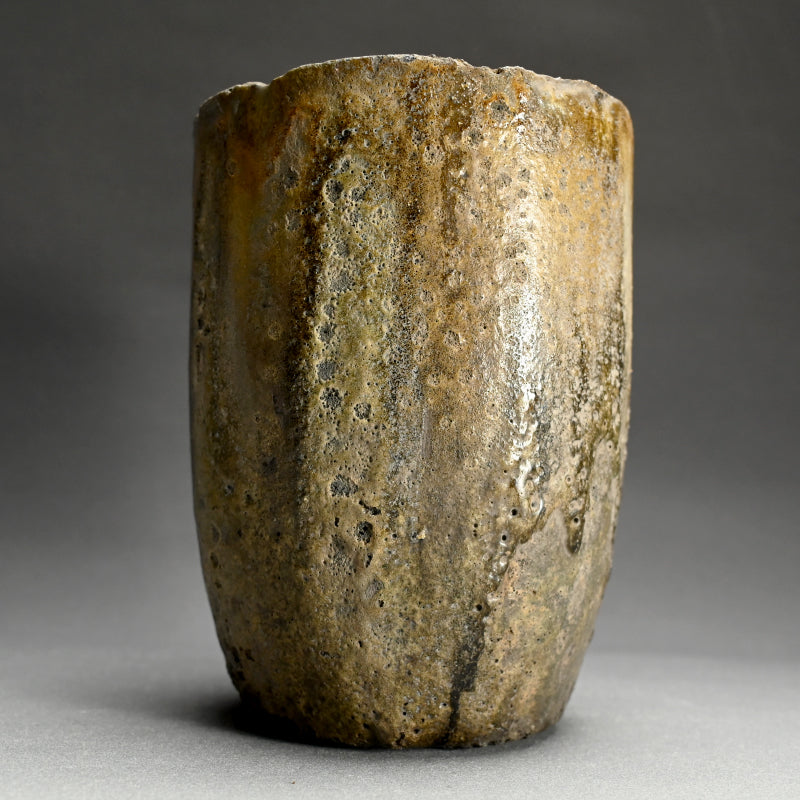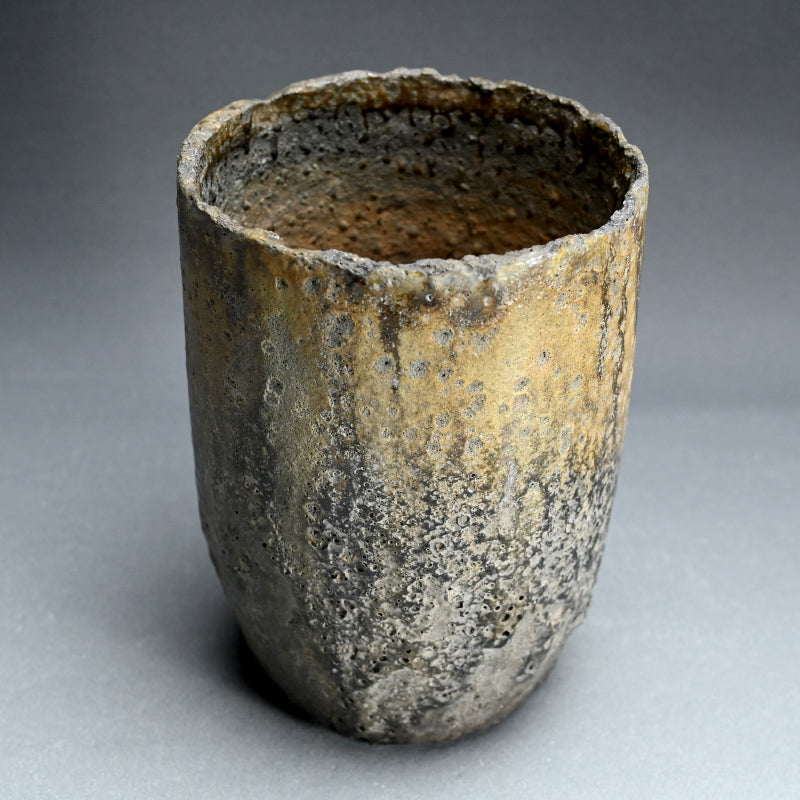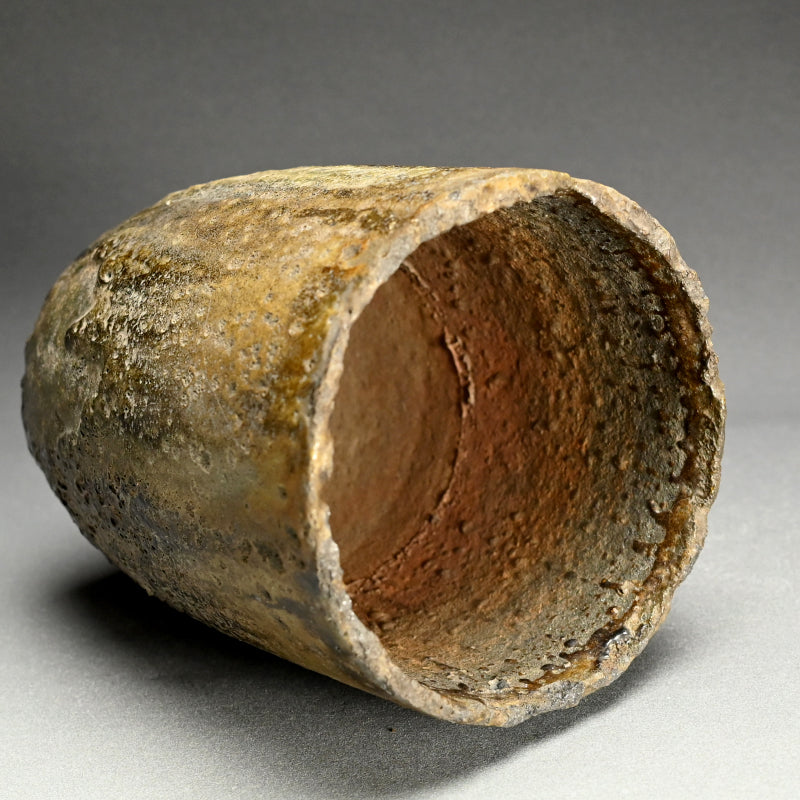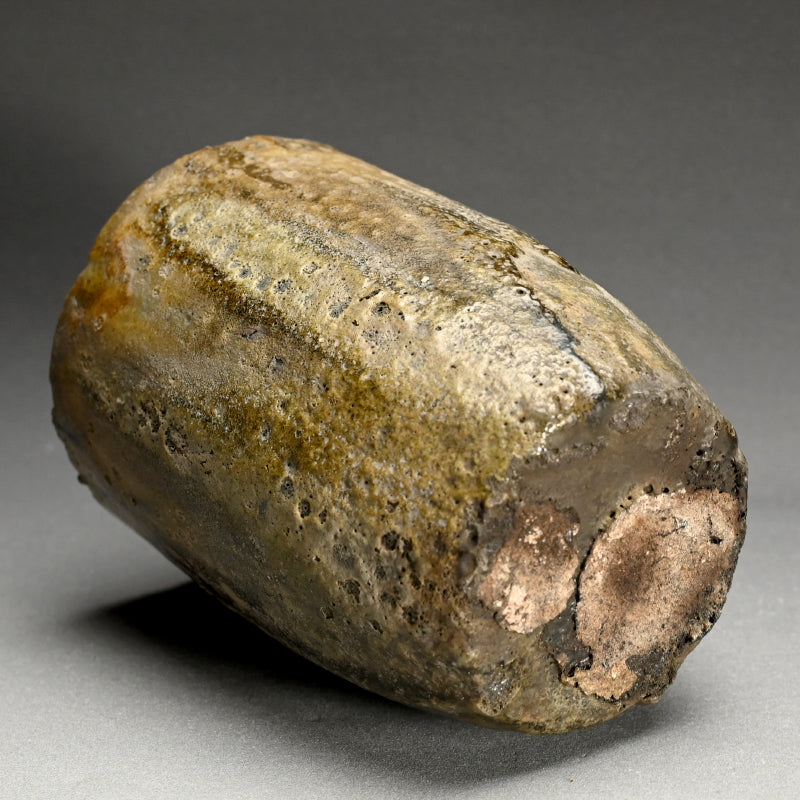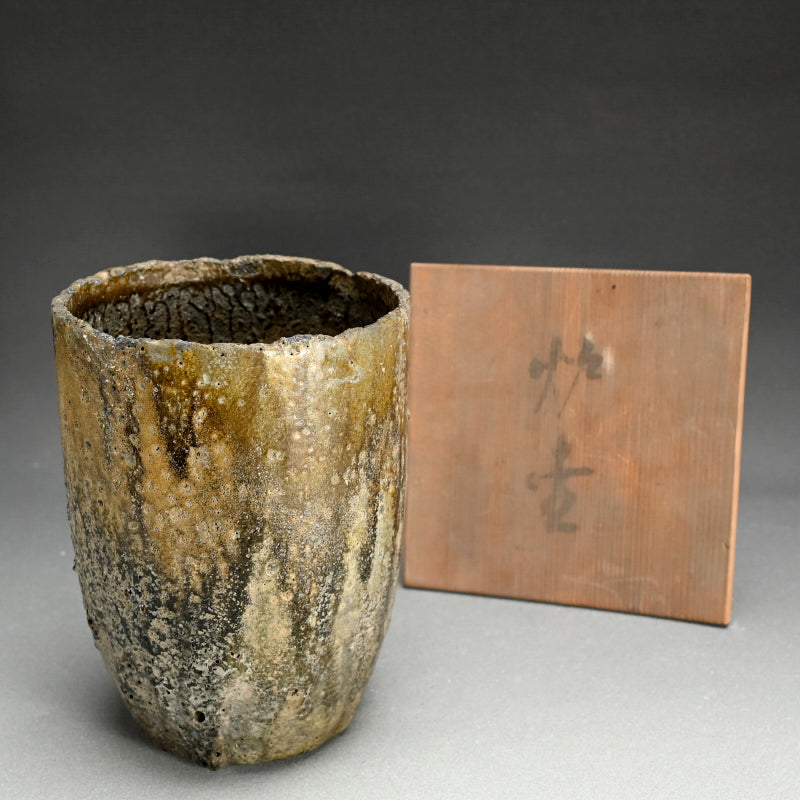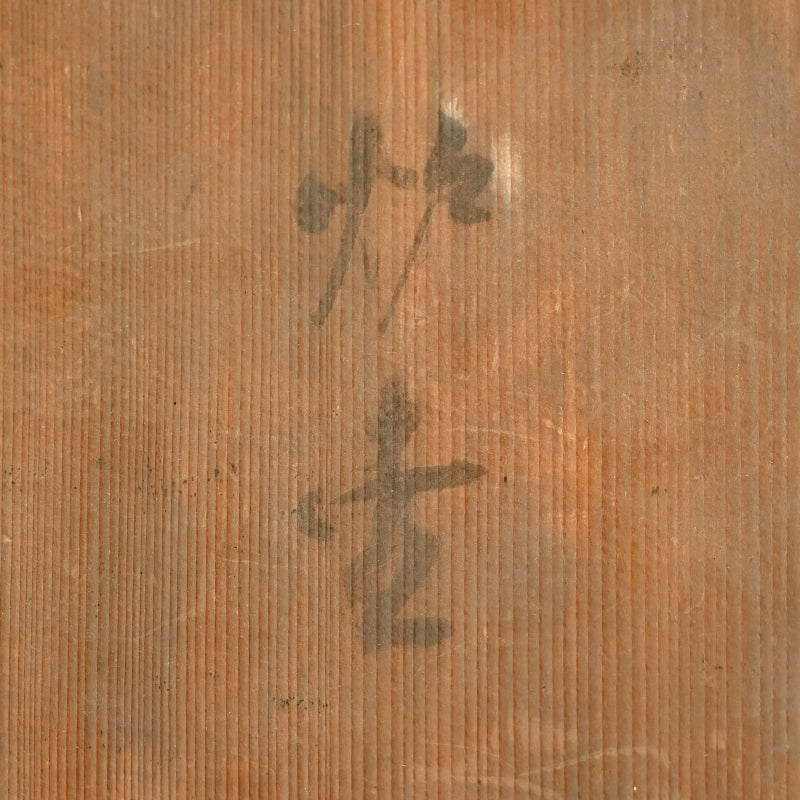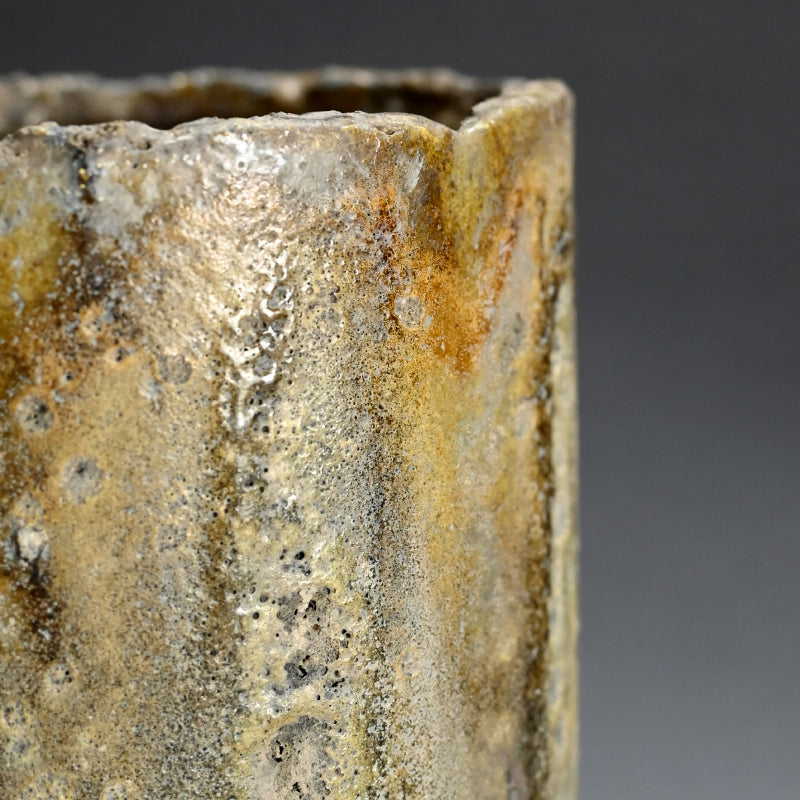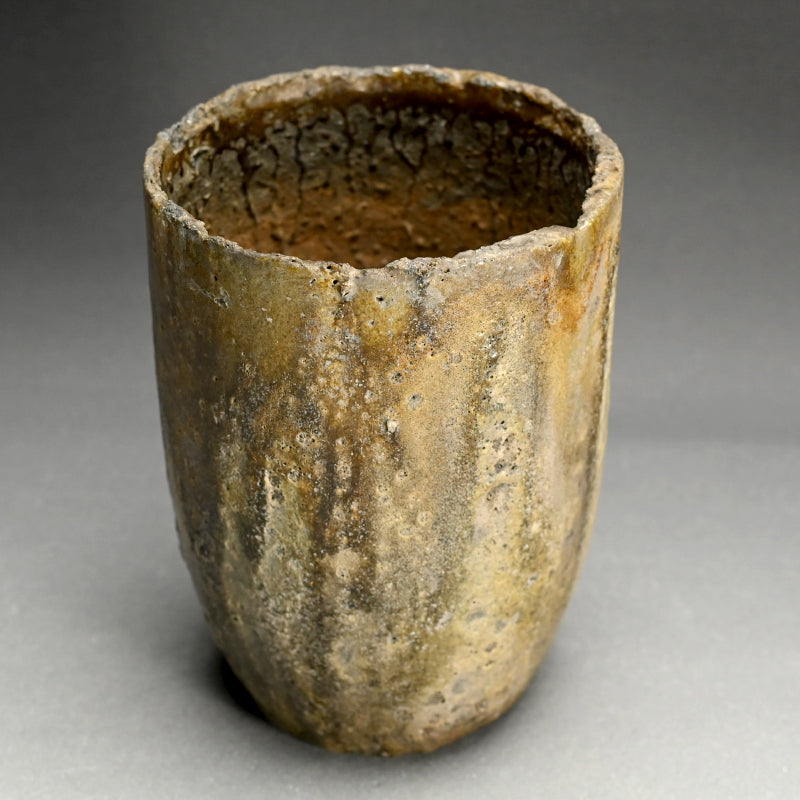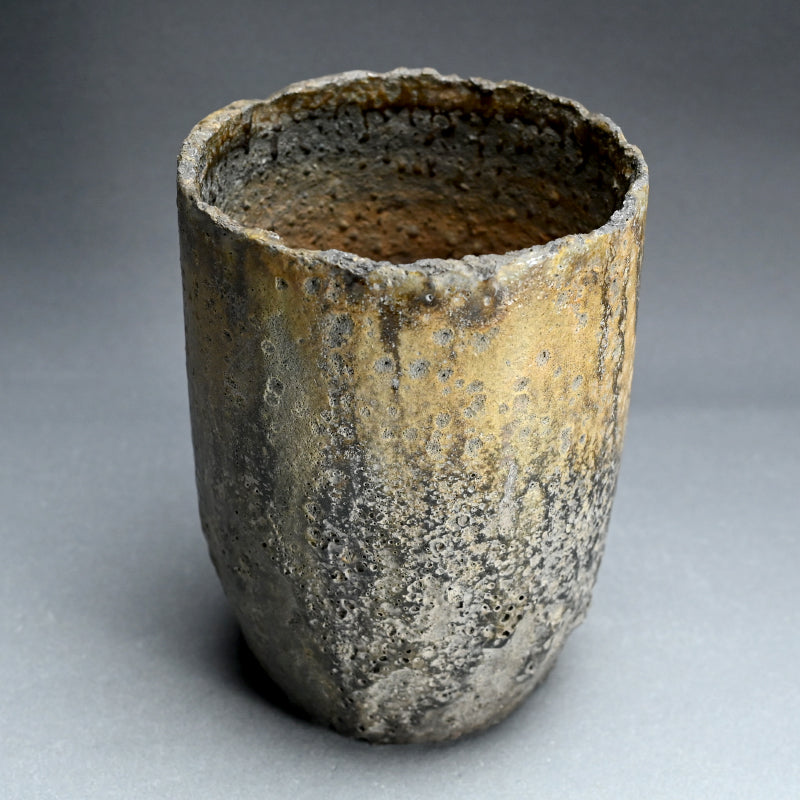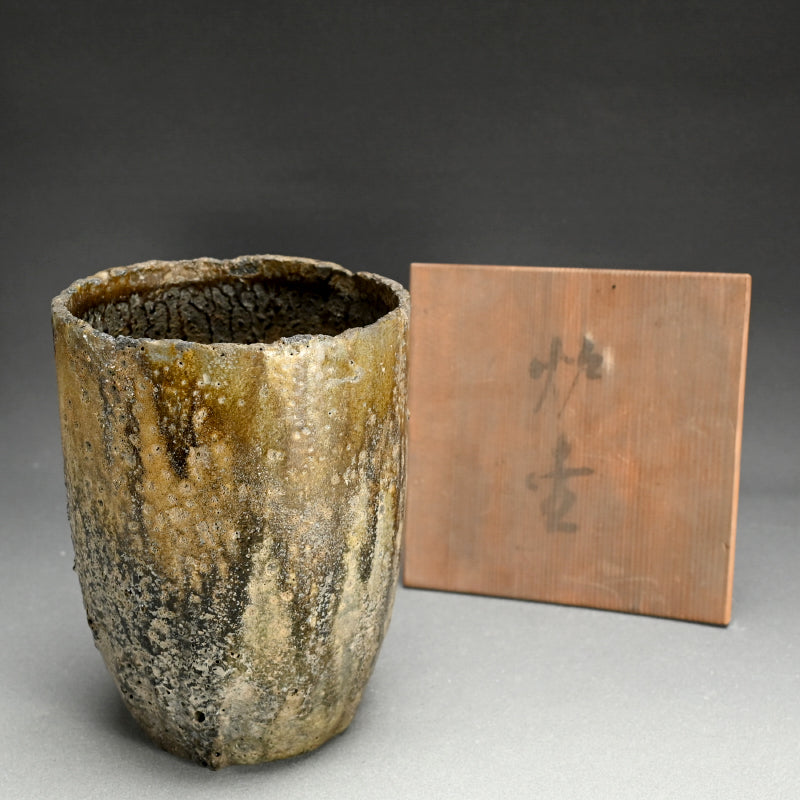Fabulous Rotsubo Crucible re-purposed as a Vase
Fabulous Rotsubo Crucible re-purposed as a Vase
Item Code: K681
Couldn't load pickup availability
This is a Rotsubo, a crucible in which pottery would have been contained during firing to protect it from flame and flying debris. Used for many years, the outside is coated in flowing green, yellow and olive glazes, indicating it is likely rom the Seto or Tokoname regions. A magnificent piece, it is 18 cm (7 inches) diameter, 25 cm (10 inches) tall and in excellent condition and comes enclosed in an old wooden box with the faded letters Rotsubo written on the lid.
The use of damaged or repurposed items in the Japanese matcha tea ceremony (chanoyu) reflects the profound aesthetic and philosophical principles of wabi-sabi, which values imperfection, impermanence, and the beauty of natural wear and age. Wabi-sabi originates from Zen Buddhism and emphasizes simplicity, humility, and acceptance of transience. In chanoyu, this philosophy is expressed through the use of objects that show signs of wear, repair, or age. It is a celebration of imperfection, Items with cracks, chips, or asymmetry embody the imperfection inherent in nature and life. This imperfection is not seen as a flaw but as a unique story carried by the object. In chanoyu, objects such as old roof tiles, bamboo remnants, or wooden fragments are often repurposed as utensils or decorations, reflecting the resourcefulness and mindfulness of the practitioner. Implements made from simple, everyday materials, such as an old basket repurposed as a flower vase or a rustic wooden ladle, align with the aesthetic of finding beauty in the mundane. Imperfect or aged items create an atmosphere of peace and contemplation, encouraging participants to focus on the moment. Each piece, especially if damaged and repaired, becomes unique, embodying the artisan’s or user’s story. The natural materials and their gradual transformation over time echo the seasonal and transient themes central to tea ceremony aesthetics. By using damaged or repurposed items, the host conveys humility and a respect for history and tradition. The practice teaches guests to value the essence of things over their outward perfection, encouraging mindfulness and gratitude and embodies the Japanese reverence for transience, turning objects that might be discarded in other contexts into cherished treasures. This practice serves as a poignant reminder to appreciate life's imperfections and to find beauty in the unexpected.
Share



